Beyer-Garratts
My time with the first, last and largest. And, their miniatures in the 21st Century.
The first, K1 of 1909
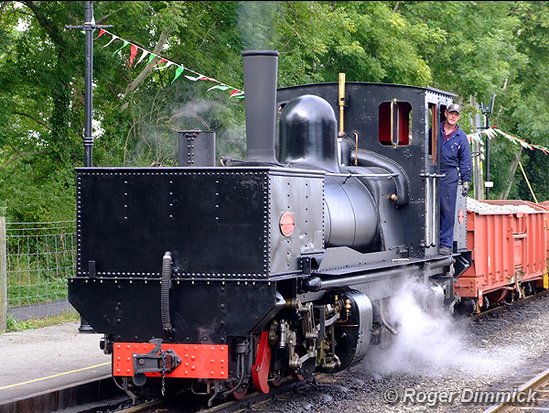
Arriving at Dinas on the Welsh Highland Railway with a loaded ballast train on Beyer-Garratt K1
This was the first train for the loco using coal fuel since the 1920's
September 2007
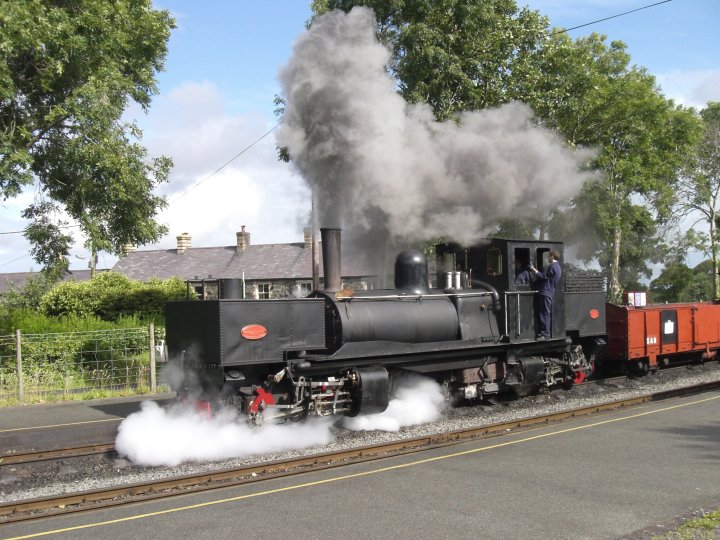
K1 departing Dinas, July 2008
Owen Chapman image
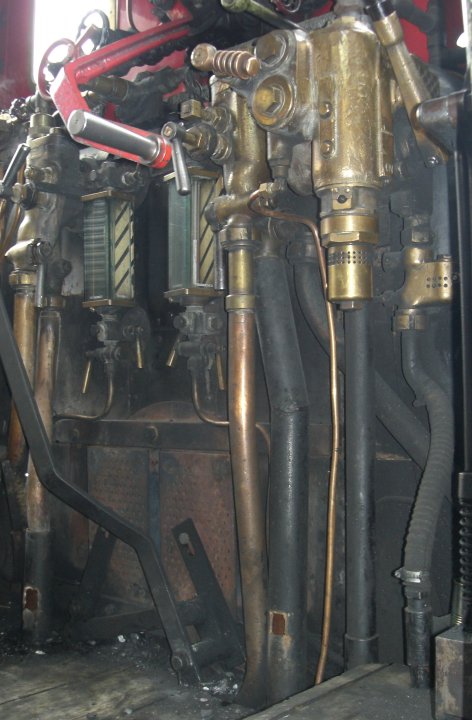
Cab of K1 showing injectors, overflow pipes, firebox door and brake manifold
Components worked on in 2007 to enable the loco to enter traffic.
Owen Chapman image
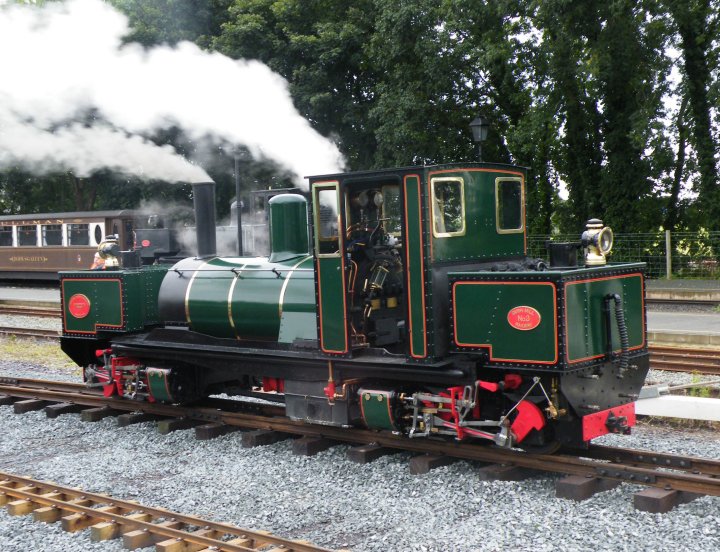
15" gauge K1 that also formally ran in Tasmania, sitting in the yard at Dinas North Wales as the original K1 passes by on a service train.
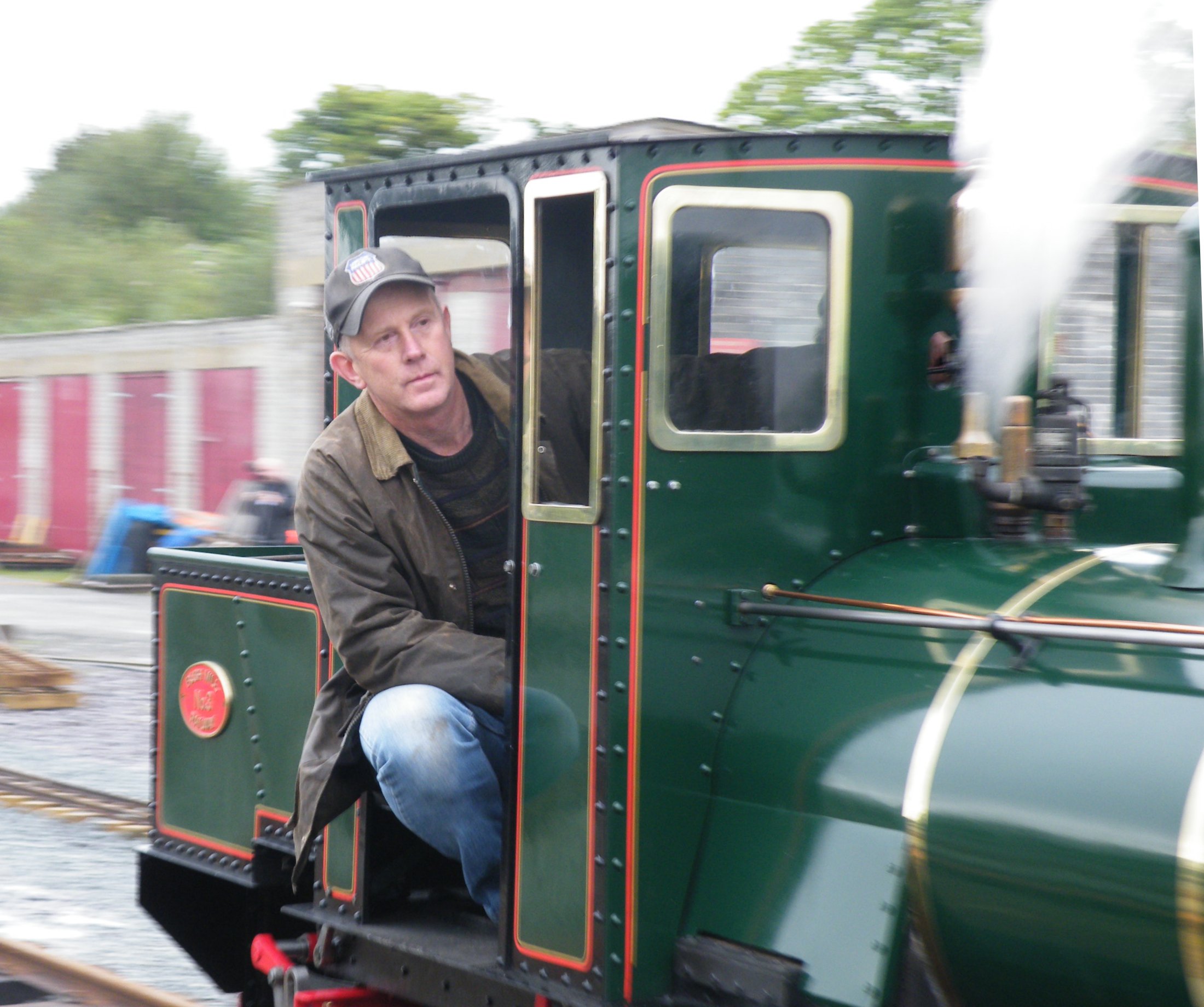
Driving the 15" gauge K1 in the yard at Dinas, North Wales in September 2008
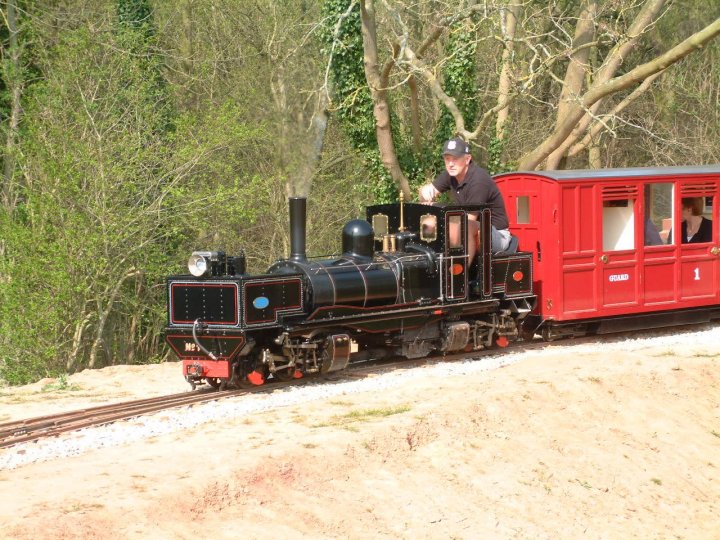
Driving the 3.75" scale Beyer-Garratt K1, Herefordshire, England
April 2007
Gavin Hamilton image
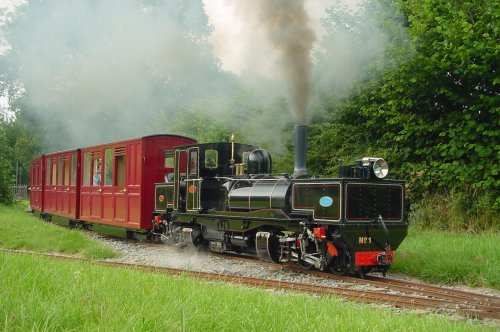
The Last, NG/G16, 143
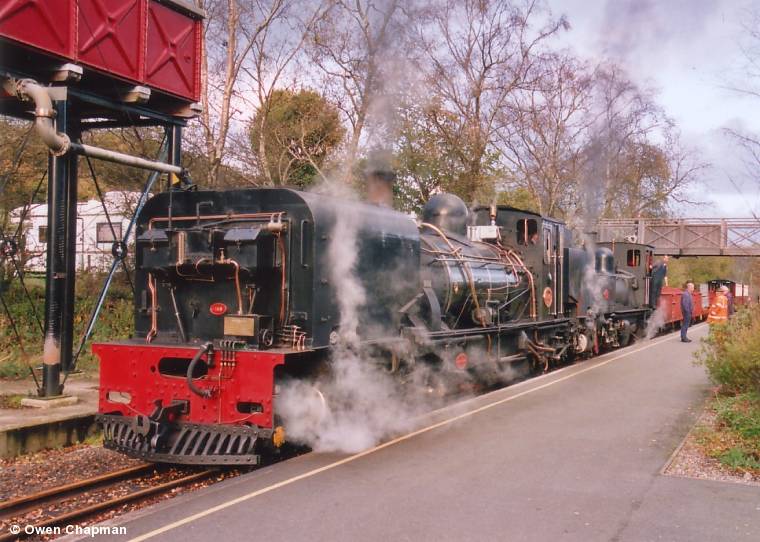
Beyer-Garratt NG/G16 143 built in 1958 with K1 in tow.
Both now working on the Welsh Highland Railway
I was privileged to drive 143 on an empty stock working from Carnarvon to Dinas in September 2007
This image by Owen Chapman circa 2005
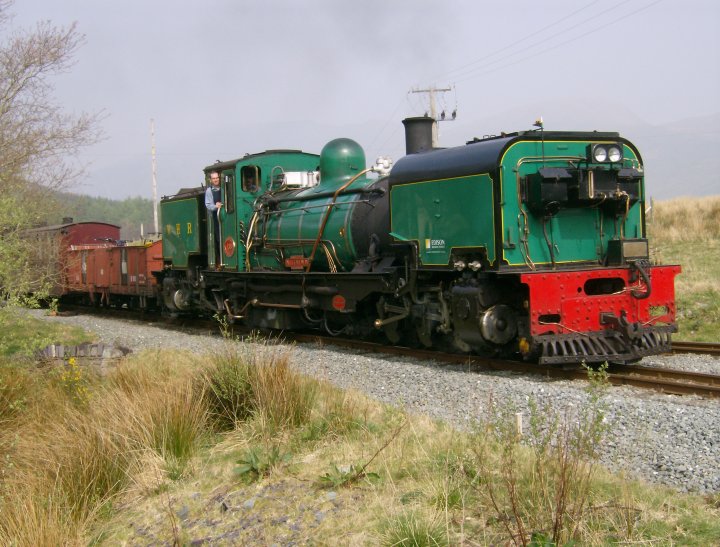
Also from the last batch built in 1958, Beyer-Garratt NG/G16 138
April 2007
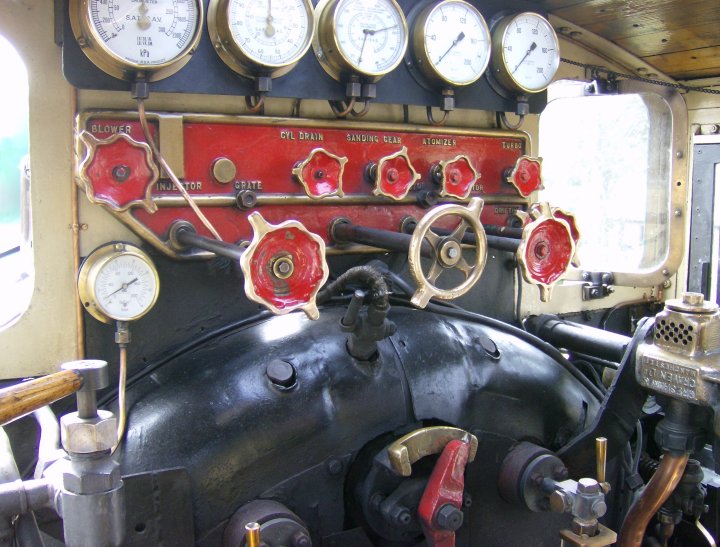
Cab of NG/G16 138
April 2007
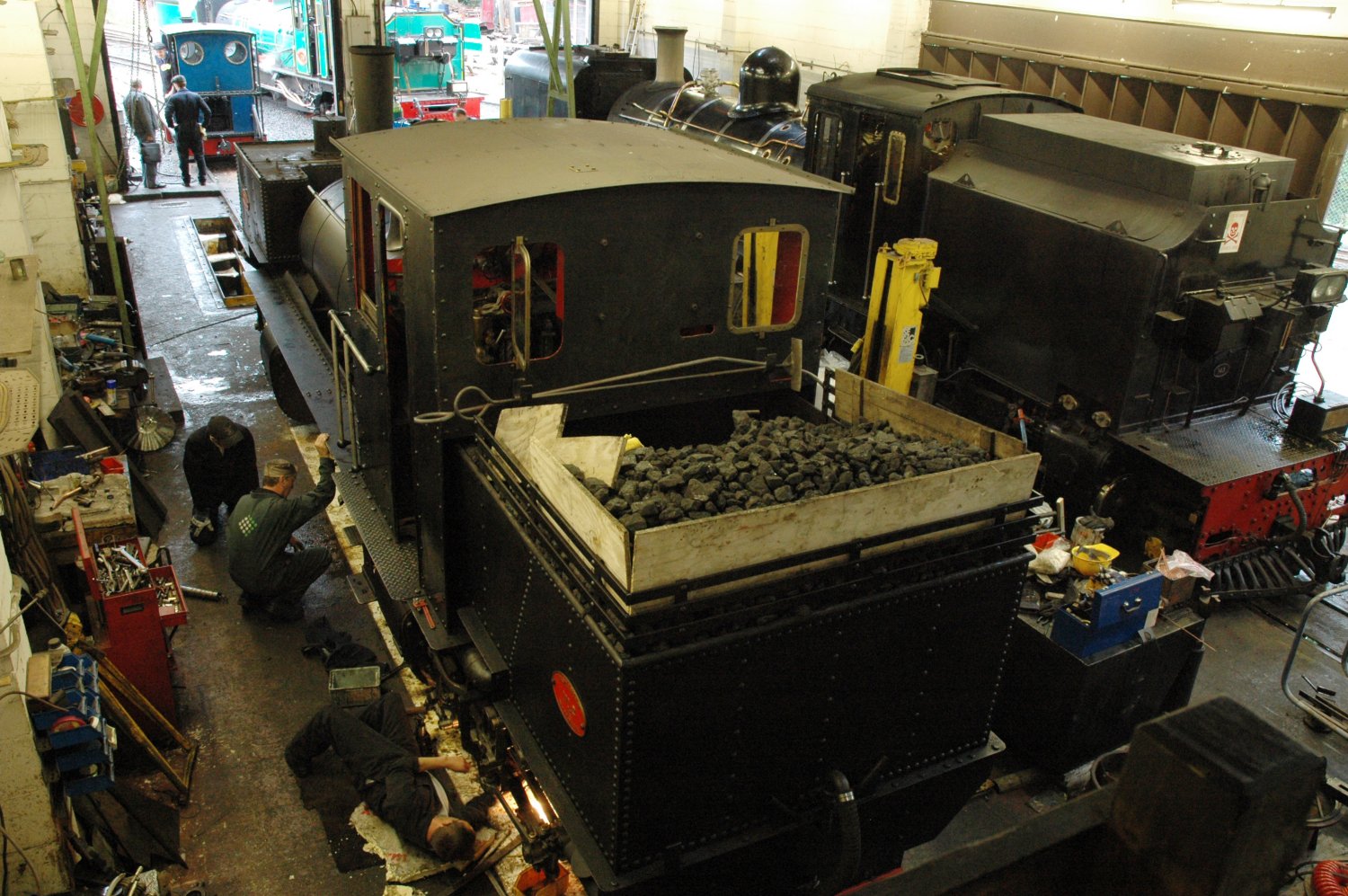
K1, 143 and 138 at the Dinas loco shed on the Welsh Highland Railway
K1 is in it's first weekend with coal fuel since the 1920's
The following week the coal rails installed to allow enough coal to be carried were raised to 6 high and the boards disposed of.
Bryn Morgan is attending to the lubrication feed to the axel boxes while Alf and Mick check the ash pan dampers.
September 2007
Steve Sedgwick image
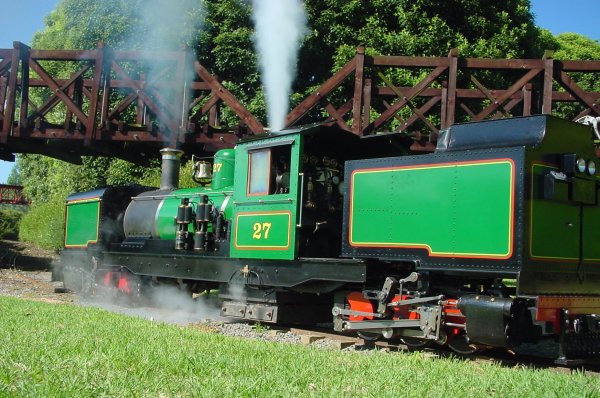
3.75" scale NG/G16 Beyer-Garratt in New Zealand
January 2004
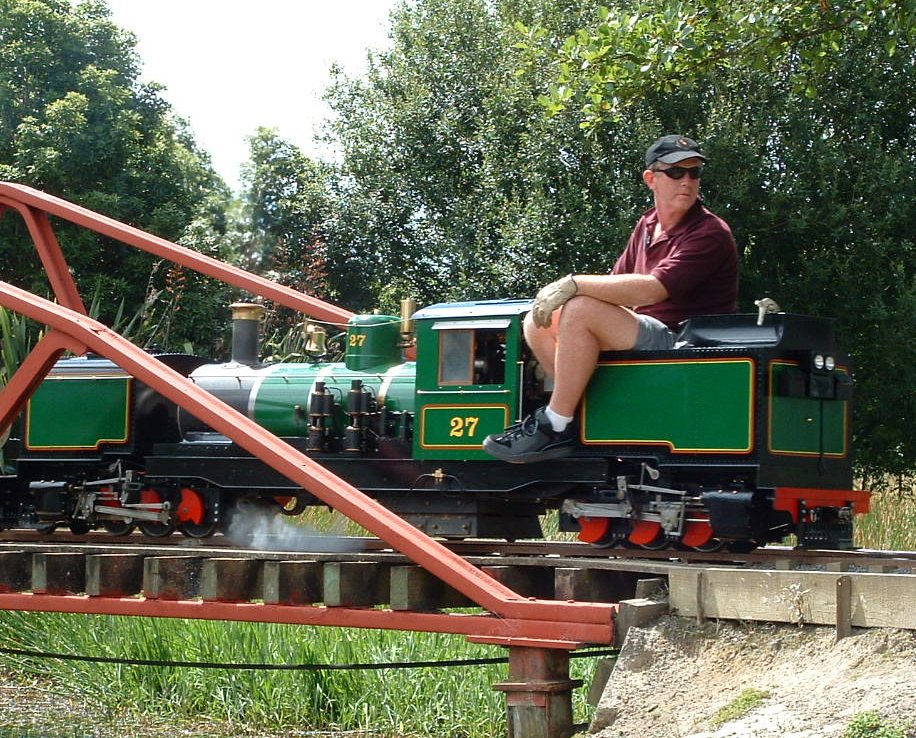
Driving the 3.75" scale NG/G16 in New Zealand
January 2004

Cab of 3.75" scale NG/G16
January 2004
The Largest*, East African Railways 59 class
5918 "Mount Gelai"
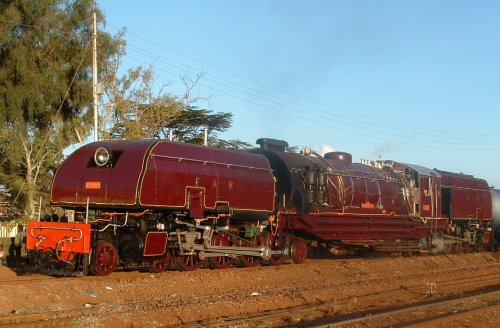
East African 59 class 5918 at the head of a special working to promote tourism in Kenya
December 2004
Click here to see 5918 being removed from the museum in 2001
Click here to see 5918 working in December 2004
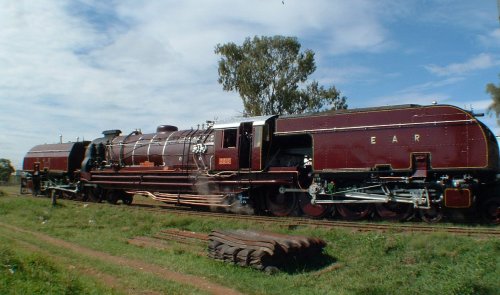
East African 59 class 5918 "Mount Gelai at Athi River, Kenya, waiting for the road with a test train.
December 2004
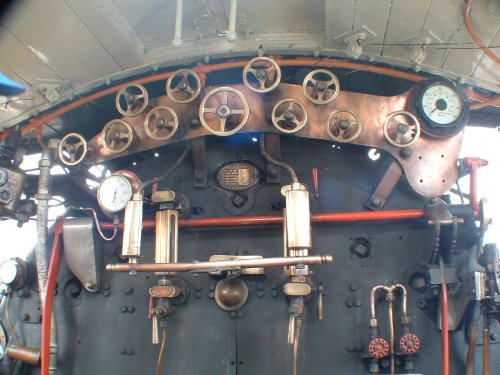
Cab of East African 59 class 5918 "Mount Gelai"
December 2004
The missing instrument on the right is actually the location of a clock. The clock was the personal property of the driver Kirpal Singh of Mombasa. When he retired in 1980, after the driving the locomotive for 15 years, he took the clock home.
Click here to see 5918 emerging from the works on to the traverser in December 2004
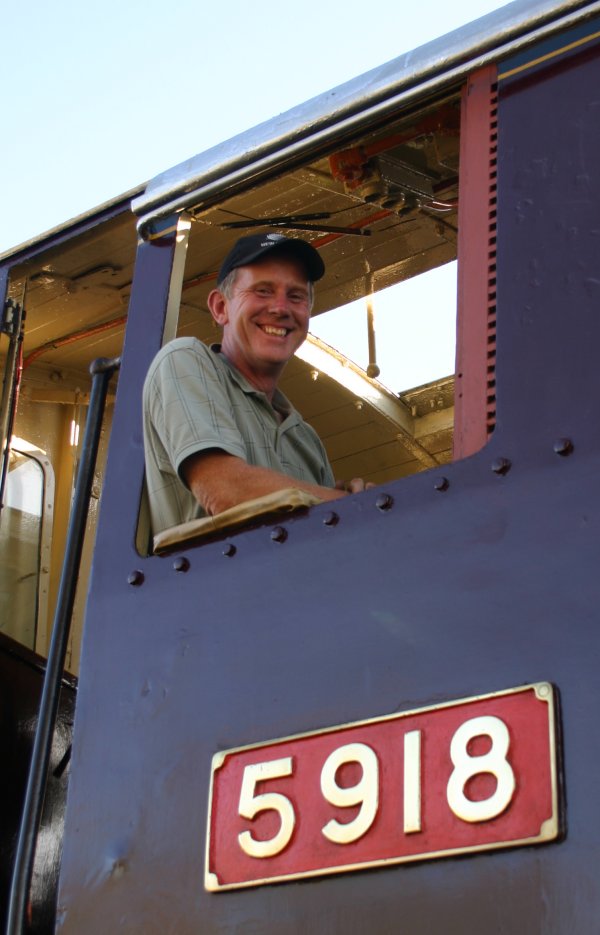
A smiling Trevor Heath the day of my drive of 5918
December 2004
Graham Roberts image
More images and narrative from Kenya in 2004 can be found here
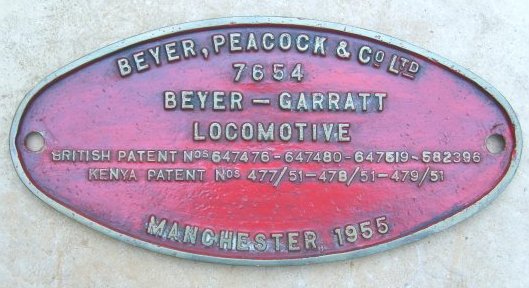
Builders plate from East African 59 class 5923 "Mount Longonot"
Owned by Graham Kelsey
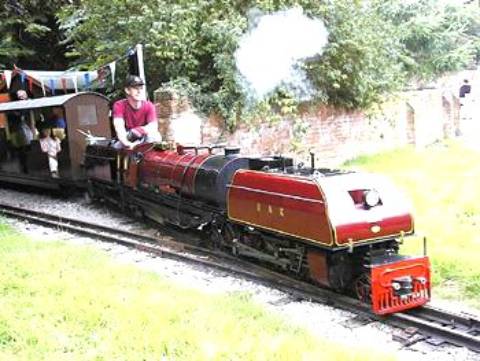
Driving the 2" scale East African 59 class 5928 "Mount Kilimanjaro"
September 2001
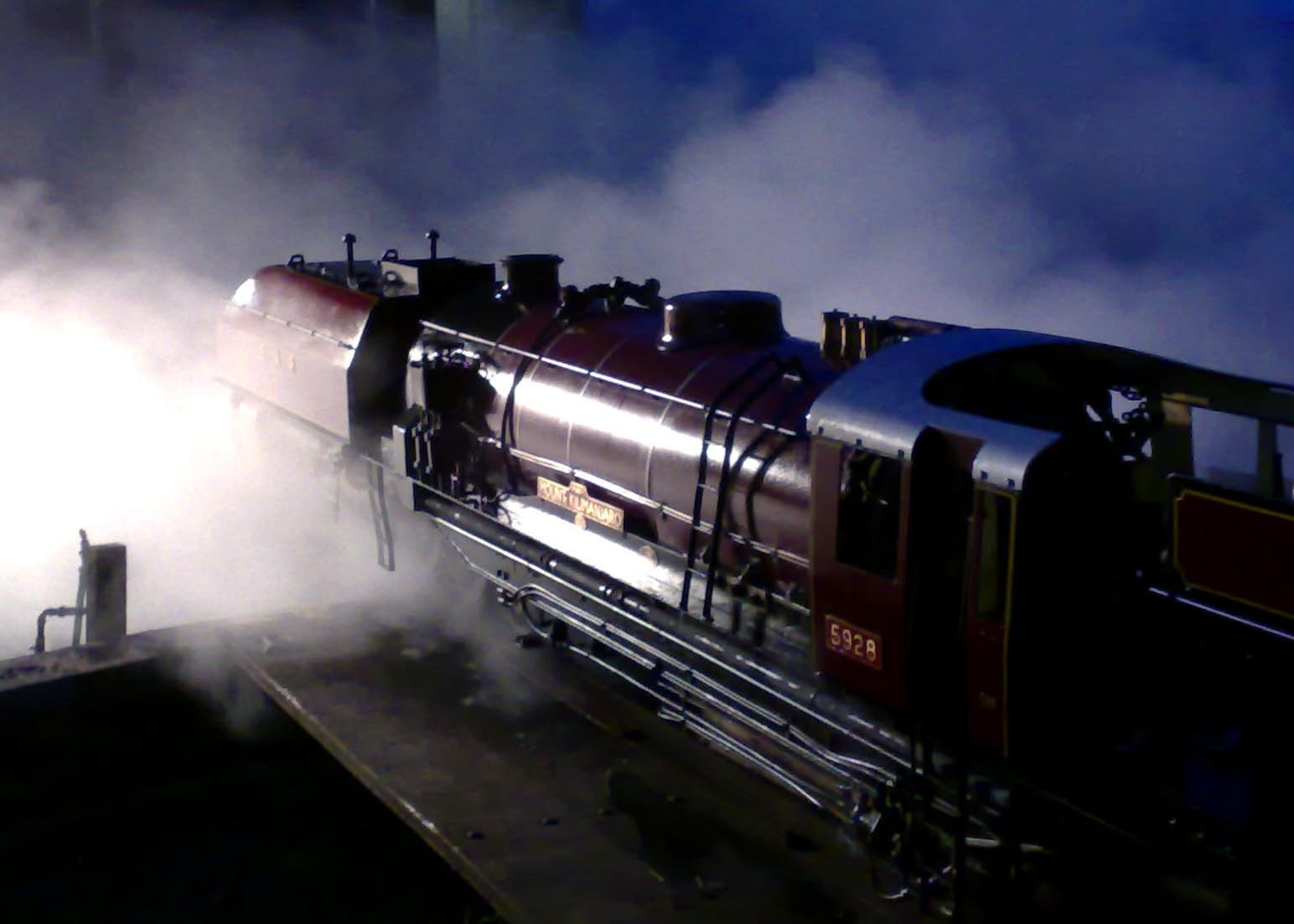
5928 at the end of the day. Weston Park, Shropshire England
Click here to see a video of 5928 operating.
The East African 59 class has four "siblings" from the same era although none are as powerful.
The New South Wales Railway
AD60 Class
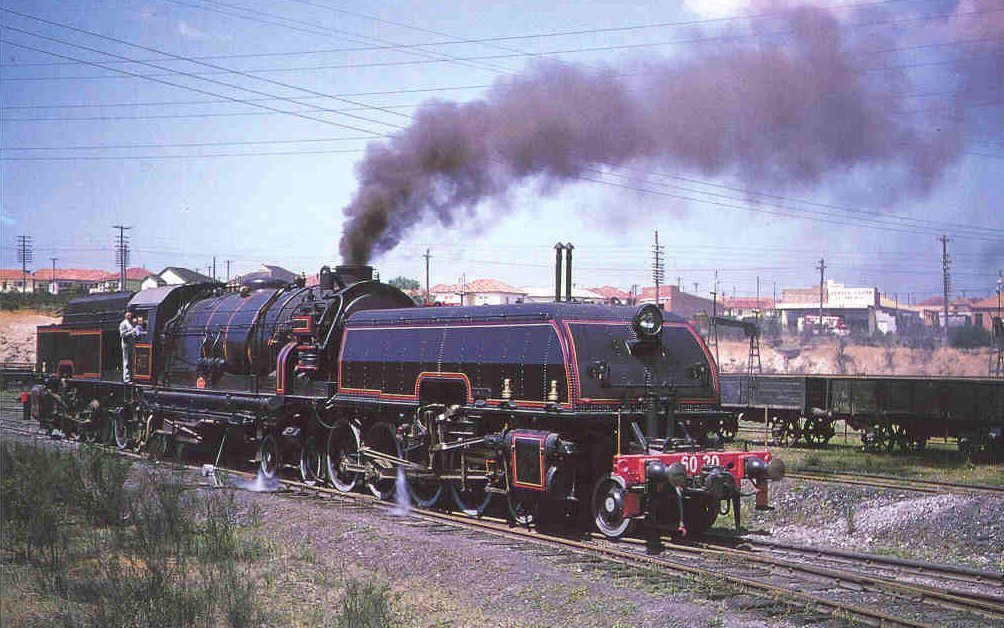
New South Wales Railway AD60 class Beyer-Garratt 6020
Image taken in 1955
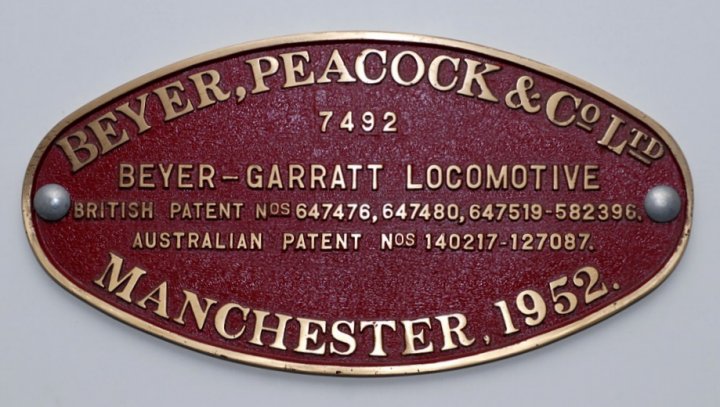
Builders plate from AD60 6020 owned by Richard Whitford
Not the 21st century but we can hope that a current operating image of 6029 will be possible within this decade.
See here for the latest news on the restoration.
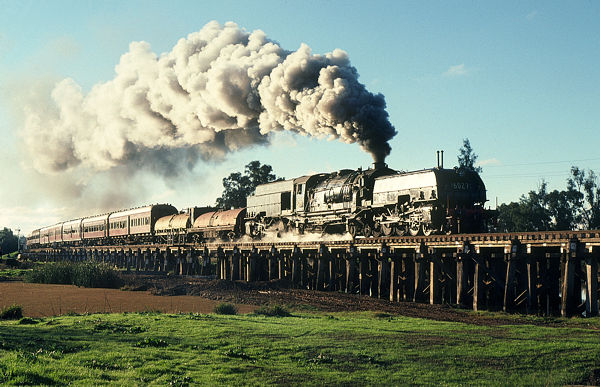
New South Wales Railway AD60 6029
Excursion service in June 1981
Dennis Rittson image
New South Wales Railway. AD60 6039 at Dorrigo
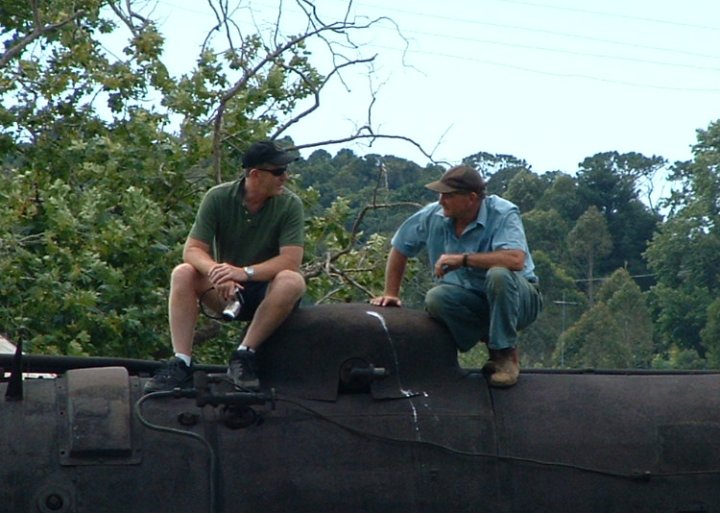
Sitting on the dome cover of AD60 6039 at Dorrigo chatting to custodian Keith Jones
January 2004
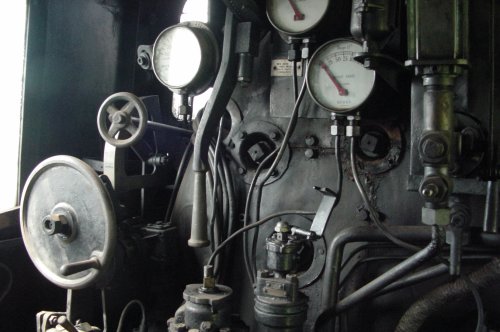
Drivers controls on AD60 6039
January 2004
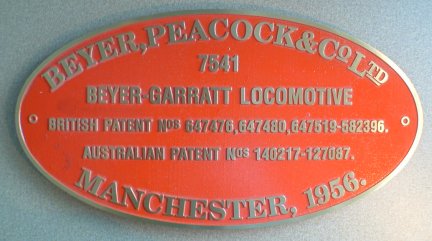
Replica builders plate for AD60 6039 presented by the custodian of 6039, Keith Jones upon my visit to Dorrigo, NSW
January 2004
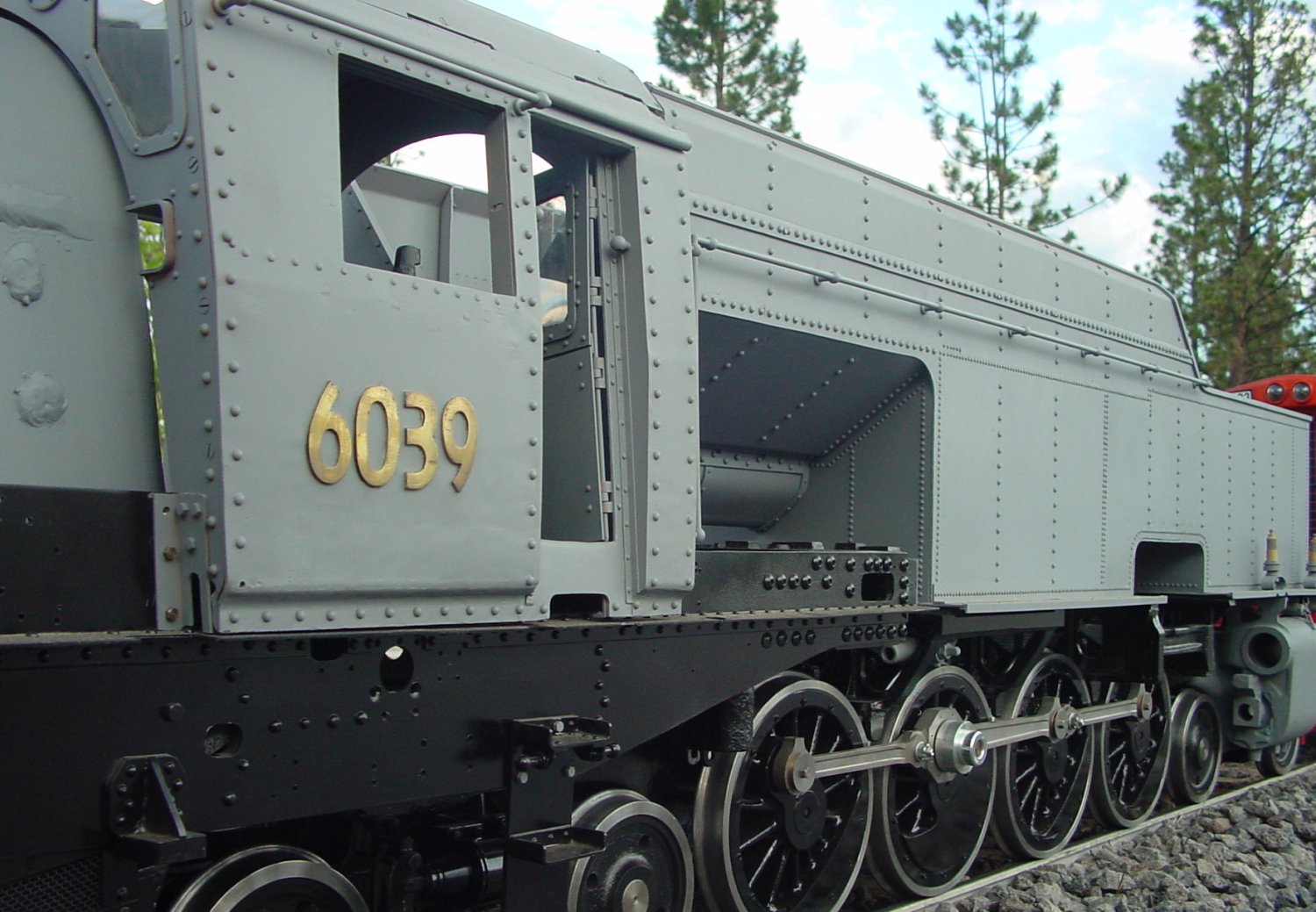
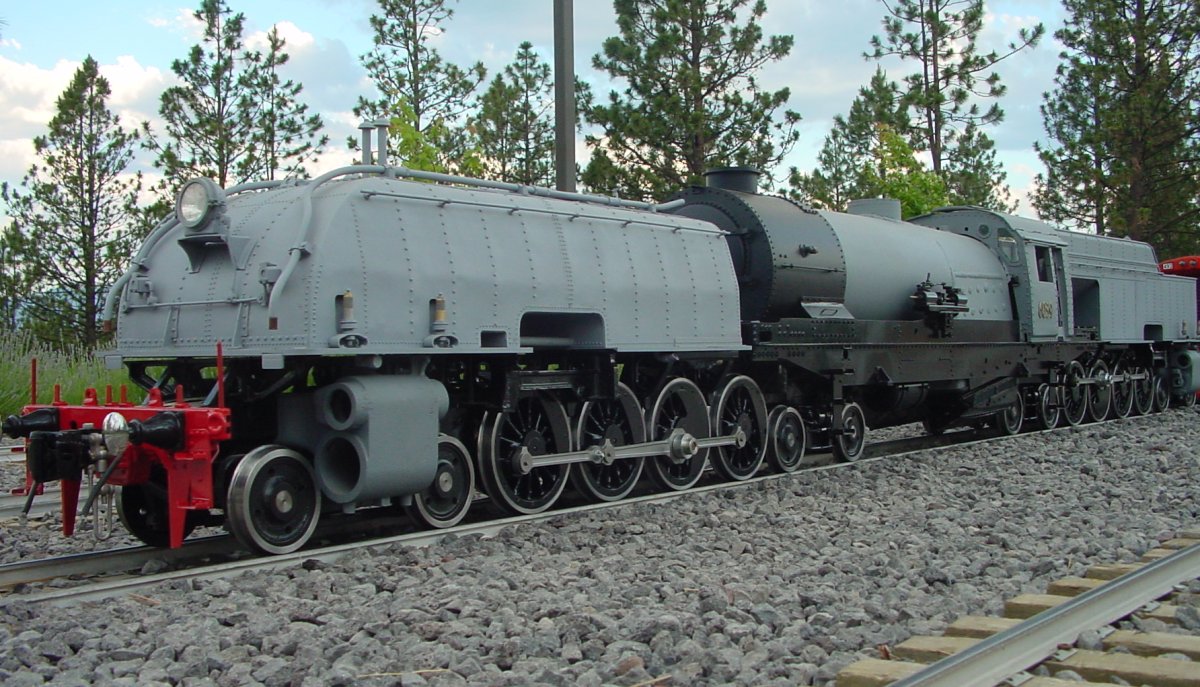
Two views of my personal locomotive, the 1.5" scale AD60 6039
July 2003
Click here to see a video clip of this loco on test
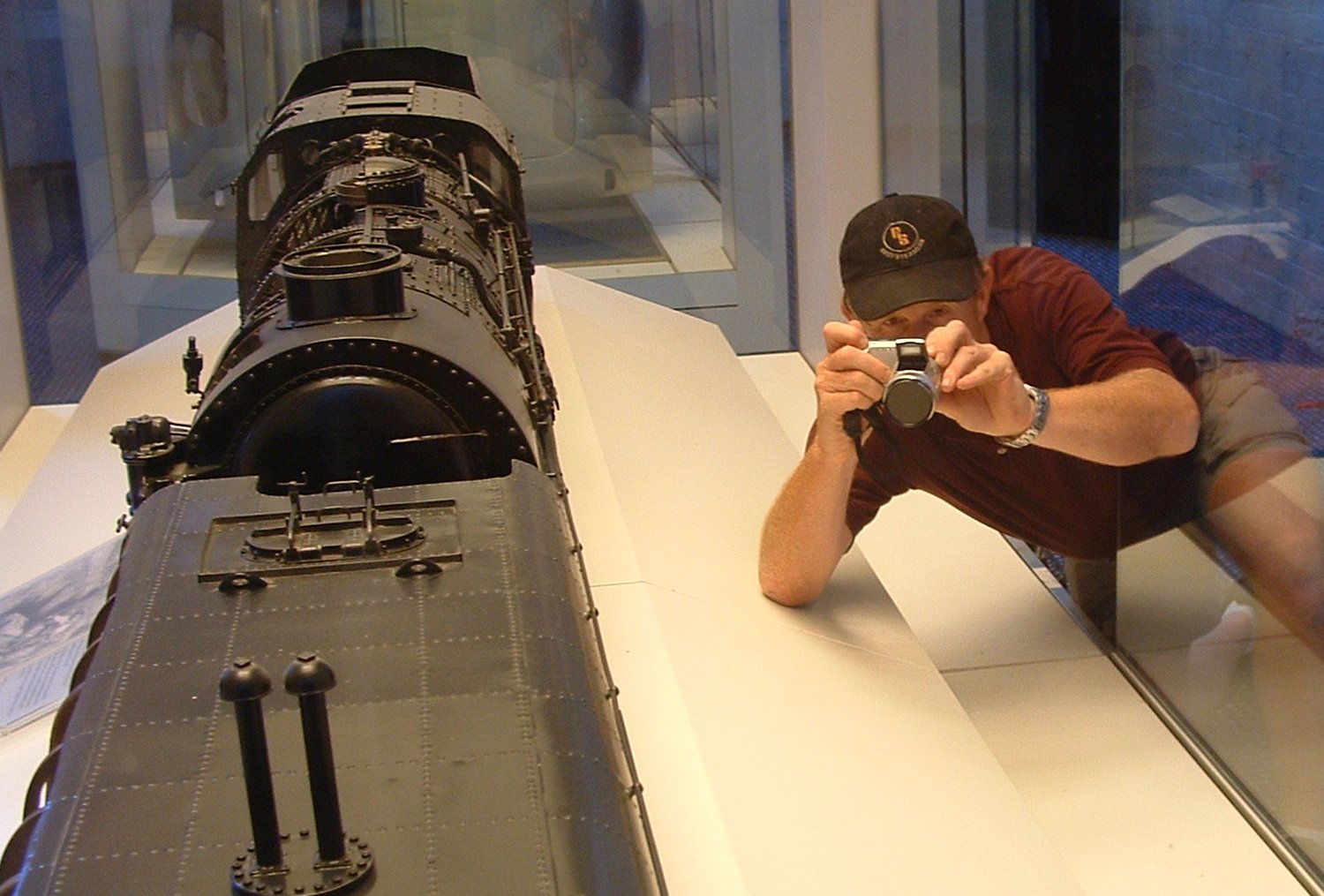
Photographing details (with special permission) on the sectioned AD60 at the Powerhouse Museum in Sydney, Australia
January 2004
The National Railway of Zimbabwe 20th class

National Railways of Zimbabwe 20th class 730 (originally numbered 705) on Bulawayo shed in July 2001 prior to hauling a revenue freight to Plumtree on the Botswana border.
This locomotive remains basically in serviceable condition today although it has not been used since 2001
Click here to see 730 and 740 working to and from Plumtree in July 2001
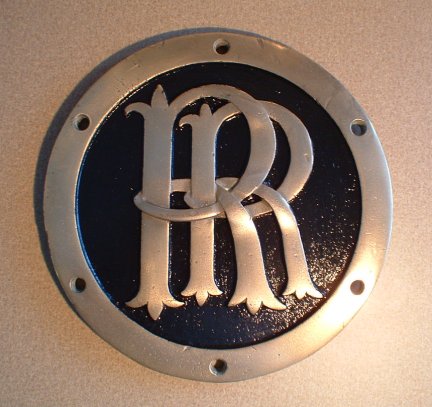
An original smokebox insignia from a Rhodesian locomotive
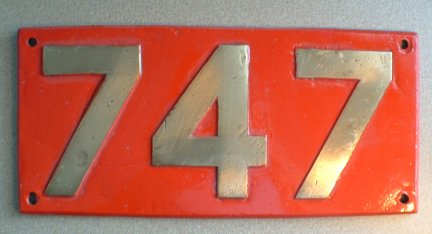
The original front pilot beam number plate from the 20th named "Jumbo"
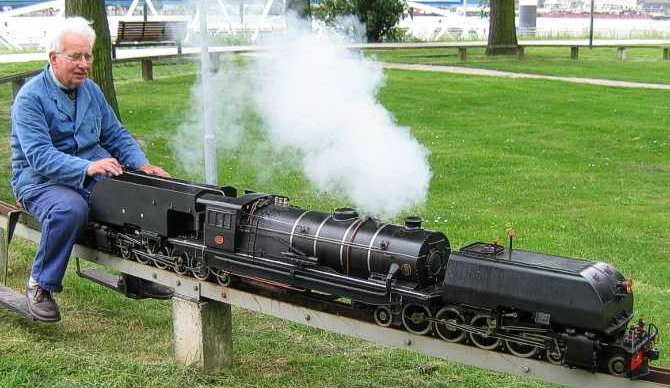
This 3.5" gauge 20th built by Jan Kouwen is based in the Netherlands
The miniature version of the insignia can be seen on the side of the smokebox
Click here to see a video clip of this loco in action
South African Railways
GMA/M
There may be an opportunity to work on the restoration of South African Railways GMAM 4083 now resident in steam friendly New Zealand sometime in the future.
Here is the loco standing outside the Mainline steam loco shed at Parnell, Auckland in April 2008
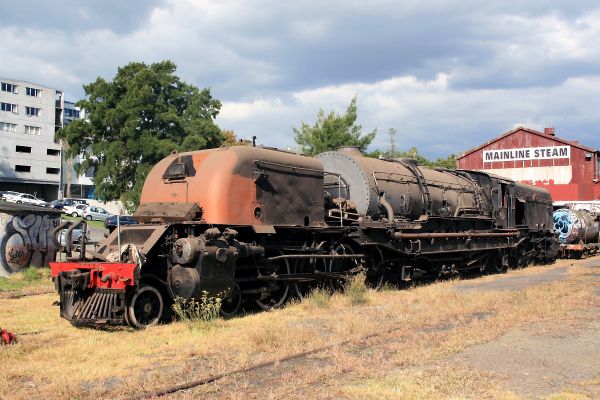

4083 March 1997 in Auckland, NZ
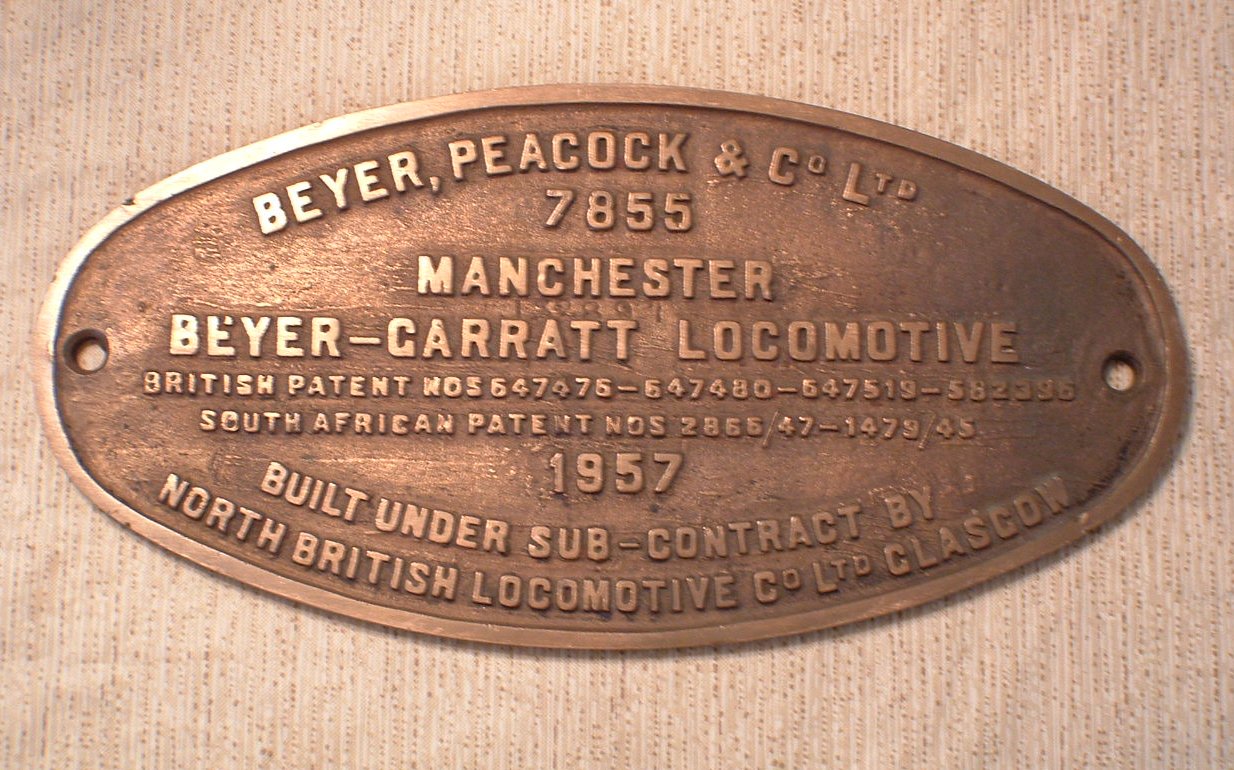
Builders plate from the very last GMA/M 4140, the last large Garratt built in the UK
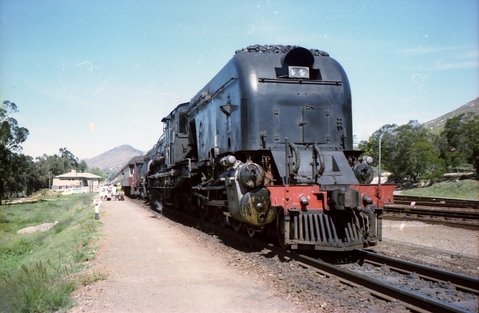
4140 at Camfer, South Africa in 1978
Richard Niven image
Click here to view a video clip of a 1" scale, 5" gauge GMAM at the indoor meeting at Sinsheim, Germany in 2003
If you would like to join the "Garratt talk" e-mail group to keep up with news about Garratts worldwide, send an e-mail to: Garratt-subscribe@yahoogroups.com
* There are many ways to classify the "largest" of anything. Steam locomotives are generally classified by tractive effort. The East African 59 class has a tractive effort of 83,000 lbs making them the most powerful locomotives operating in the world from 1972 when the only larger Garratt, the SAR GL class were withdrawn until1980 when the last 59 class was withdrawn and making "Mount Gelai" the second most powerful locomotive in operating condition in the world today next to the Union Pacific "Challenger" 3985